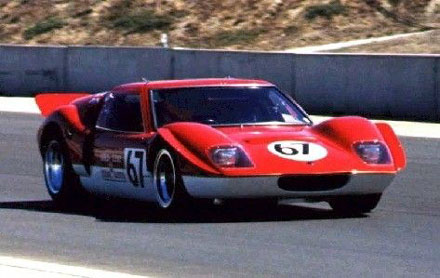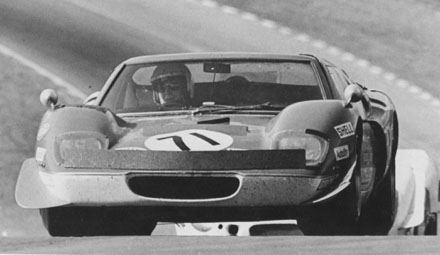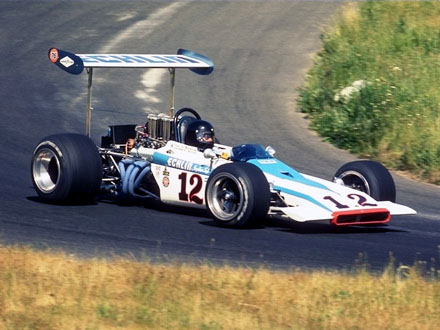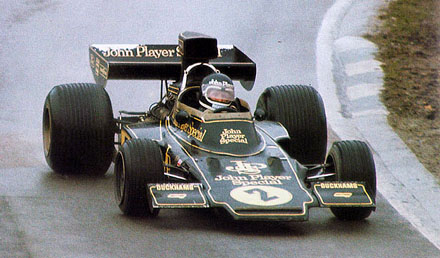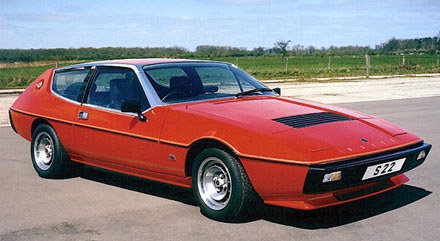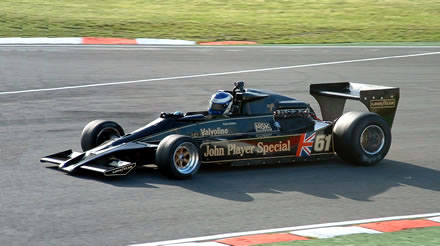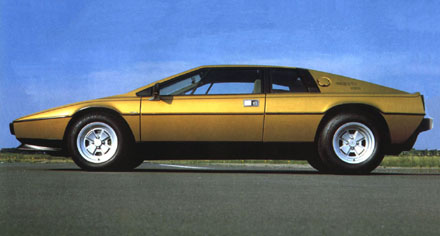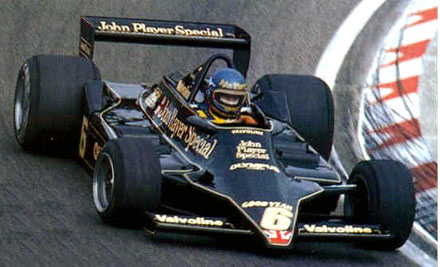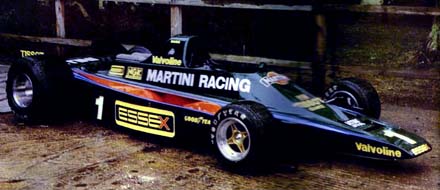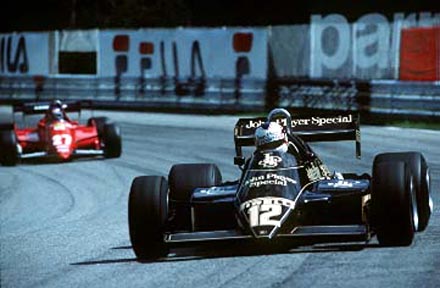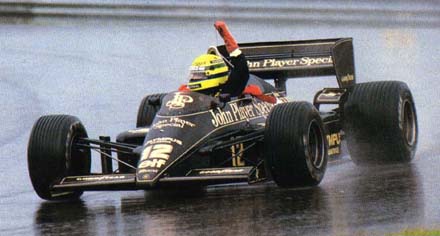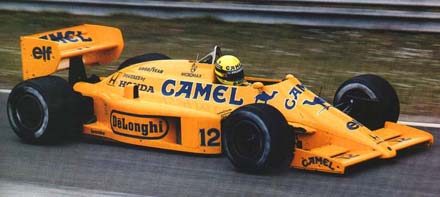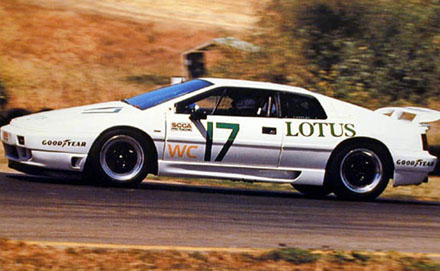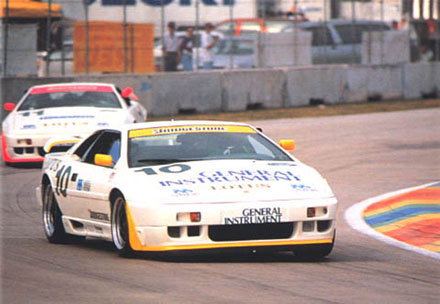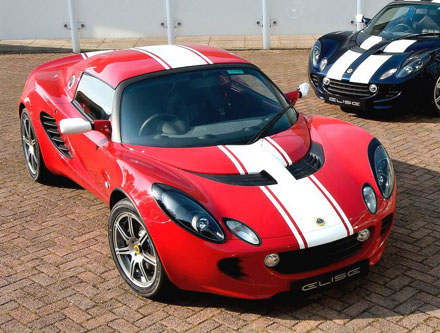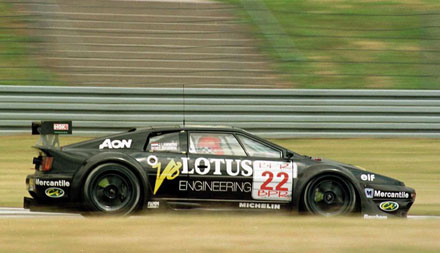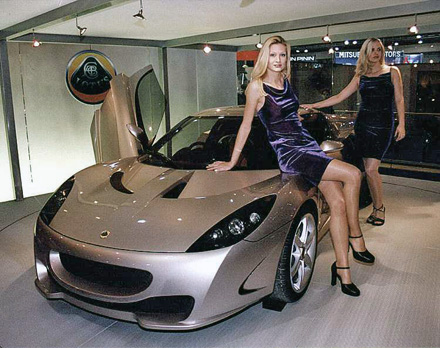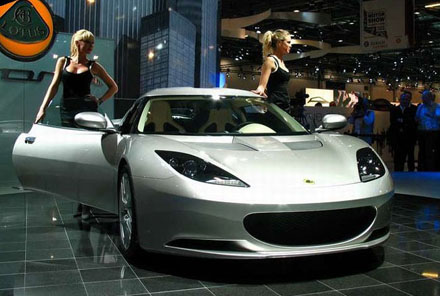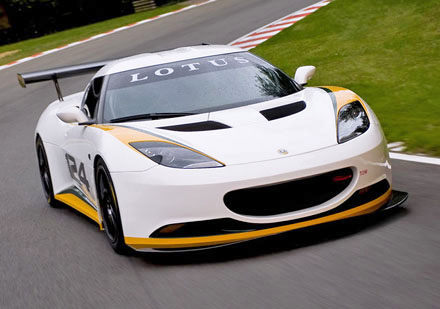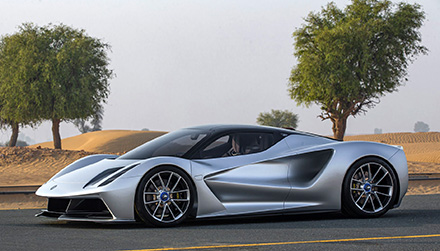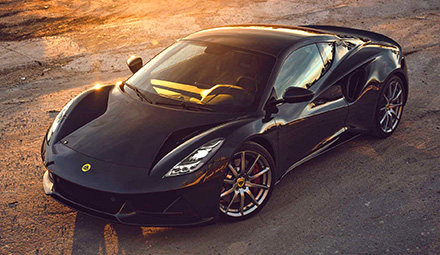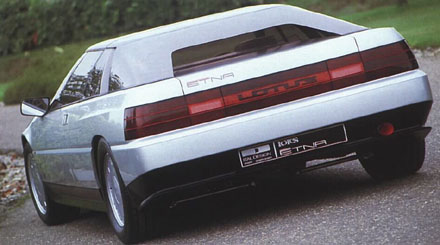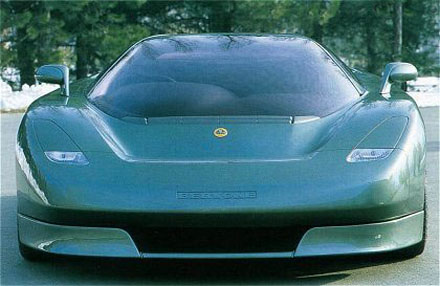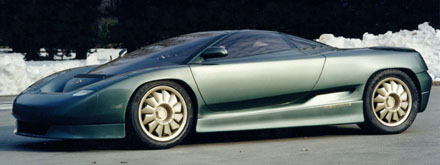
Lotus Models: Part 2
Below is a comprehensive list of all the Lotus models, from Type 60 onwards
| Type 60 | 1969 - 72 | 625 |
The Lotus Seven S4. The car had a new chassis and new more up to date GRP body work. It was supplied with either the Ford Cortina pushrod 1300cc or the 1600cc engine, or the Lotus Ford Twin cam engine. The car also had a new interior, with more space and a new dashboard. The cars styling was controversial and many thought it lacked the purity of the earlier cars. |
| Type 61 | 1969 - 71 | 248 |
A single seater Formula Ford racing car. The car had a spaceframe chassis, a wedge shaped GRP body and a Holbay Ford LH105 1600E engine, producing 105bhp. The car was used by the Jim Russell Racing Drivers school and proved popular. |
| Type 62 | 1969 | 2 |
The Type 62 was a development of the successful Type 47 and intended to race in the Appendix J Group 6 Prototype Class. The car was designed by Martin Waide at Lotus Components and had a space frame chassis, and featured the new Lotus 2.0 litre LV240 DOHC engine (in time this engine would become the Type 907 engine, used to power the Lotus Elite, Esprit, Eclat and Excel). The car had limited competative success, due mainly to problems with the Vauxhall derived engine block. The car's most successful race was finishing 3rd position at the Tourist Trophy at Oulton Park in 1969.
|
| Type 63 | 1969 | 2 |
A single seater Formula 1 racing car. Ignoring the unsuccessful work carried out by BRM, Colin Chapman attempted to introduce a 4 wheel drive car to Formula 1, to replace the Type 49. The car had an aluminium monocoque chassis with a 2993cc Ford DFV engine and a Hewland 5 speed ZF transmission and 4WD torque split diff. The car was heavy and difficult to drive. The driver's had to place their feet beneath the front axle, in order to reach the pedals. Both Graham Hill and Jochen Rindt were reluctant to drive it and spent most of the 1969 season driving the older Type 49. |
| Type 64 | 1969 | 4 |
A single seater Indianapolis racing car. A conventional engined racing car with the Ford Turbo quad cam engine (turbine engines had been banded by the USAC after the 1968 season), 4 wheel drive and an aluminium monoquoce chassis. Again the Type 64 was difficult to drive and Jochen Rindt and Graham Hill dislike the car, so Mario Andretti was drafted in to drive the car. However the car crashed heavily in a high speed crash at 190 mph and was destroyed, luckily Andretti survived. It was later discovered that under high speed, the rear wing had put to much load on the rear hub casting, breaking it. The car was with drawn from the competition. |
| Type 65 | 1969-71 | 865 |
The Federal Lotus Europa. The car had a larger Renault 16 1565cc alloy engine than the standard Europa, to get past the US emissions regulations and a slightly revisied body, with a raised front wing and headlight profile. |
| Type 69 | 1970-71 | 10 F2 cars 55 F3,B,FF |
A single seater Formula 2 racing car. The car had a monocoque chassis, with a Cosworth FVA / BDG engine. The car was loosly based on the Type 59, with revised suspension, forward monocoque and rubber bag fuel tanks (to meet the new F2 regulations). The car also raced in Formula 3, Formula B and Formula FF with a Ford Twin cam engine and was competatively very successful. |
| Type 70 | 1970 | 10 |
A single seater Formula 5000 racing car. The car was had a wedge shaped body, Ford Boss 302 V8 engine (also Chevrolet) with a monocoque chassis and wheel base of the Lotus Type 49B. The car had cooling problems and so a radiator was installed in the nose cone. It's debute was at Sebring, driven by Andretti, however the engine blow up on lap 12. The car did have some success in the USA and also raced in Tamsin series in 1971. |
| Type 71 | - | - |
No Type designation |
| Type 72 | 1970-75 | 9 |
One of the most famous and successful racing cars in the history of Formula 1, the Lotus Type 72. The car had a light alloy monocoque chassis, with a Ford Cosworth DFV engine. The car had double radiators mid mounted either side of the car and an aerodynamic wedge shaped GRP body. The car continued with the Gold Leaf sponsershop during 1970. Jochen Rindt posthumously won the Driver's championship in the Type 72 (he was tragically killed at the Monza Circuit). The Type 72 also won the 1970 constructors title. 1971 was an unsuccessful year, however for 1972 the revised Type 72D wore the new John Player Special sponsership. The Type 72D was much the same as the previous year, however it had a large air intake over the down draught carbs and deeper end plates on the rear wing. and Emerson Fittipaldi won the 1972 Drivers championship and Lotus won the 1972 and 1973 Formula 1 constructors championship. The car carried on in 1974 with the Type 72E, with less successful results (after Ronnie Peterson refused to drive the new Type 76) and again for the 1975 season, by which time the car was getting old. |
| Type 73 | 1972 | 2 |
A single seater Formula 3 racing car. The car was technically advance, with a central monocoque chassis, side mountede radiators and a complex sub frame mounting for the front suspension. It was sponsered again by John Player Special and was raced in the 1972 Formula 3 season, with limited success. After some further development it was raced for the 1973 season with more success. Lotus lots interest in competing in Formula 3 by the end of that year. |
| Type 74 | 1971-72 1972-75 |
1600 3200 |
The Lotus Europa Twin Cam. An extensive revision to the Type 46 Europa, replacing the Renault engine with the Lotus Twin cam engine with 105bhp. There were modifications to the rear fins, brought down to the same level as the rear engine deck, to improve rear vision and a front splitter to improve aero dynamics. The interior had a lower floor plan and was more luxurious. The car also had lighter "Spider" alloy wheels. The Type 74 designation was also shared with the later and Europa Special. The car had 5 gears and more powerful 126bhp Twin Cam engine. |
| Type 74 | 1973 | 2 |
The Type 74 designation was shared with a Formula 2 single seater racing car. The car has sheet Aluminium monocoque, GRP body and the 1973cc Lotus 906 Novamotor engine, producing 275bhp. The Type 74 had "Texaco Star" livery and was raced by Fittipaldi and Peterson for the 1973 F3 season. The car suffered various engine failures and technical problems during the season and Lotus pulled out of Formula 2 racing at the end of the year. |
| Type 75 | 1974-80 | 2398 |
The Lotus Elite. A 4-seater luxury sports car, combining a back-boned chassis and wedge shaped GRP body, designed by Oliver Winterbottom. The car had the new 1973cc Lotus 907 alloy engine, which produced 160bhp (originally used in the 1971 Jensen Healey). The body was created using a new construction technique, that was less labout intensive than the traditional process of hand laying the glass fibre. The process was called Vacuum Assisted Resin Injection (VARI), where pre-cut glass fibre matting was laid into moulds and the the air expelled as the resin was injected in under pressure (the technique had been used by the boat industry). This meant the body was produced in 2 halfs, top and bottom and joined together. The joint was covered with a rubber strip running the length of the car. The car was praised for it's excellent handling and ride, however it was heavy at 2240 Ibs. The models consisted of the 501, 502 and highest spec 503 models. |
| Type 76 | 1974 | 2 |
A single seater Formula 1 car. This car was an attempt to make the Type 72 car lighter. It featured 4 foot pedals; the right pedal was the throttle, 2 linked middle brake pedals and a left start clutch pedal with the main clutch located on the gear lever (operated via hydraulics). The system however tended to jam and was eventually abandoned. The car was later driven with conventional pedals, however was considered heavy and poor handling and the older Type 72 was used for the much of the 1974 and 1975 season. |
| Type 76 | 1975-80 | 1299 |
Lotus Eclat. The Type 76 designation was shared with the Formula 1 racing car. The Eclat was a luxury 4 seater sports car based on the Lotus Elite, but with a more conventional hatchback design. The car shared the same chassis, mechanicals and interior as the Elite. The models consisted of the 520, 521, 522 and top of the range 523 (with a stereo cassette player, air conditioning, electric windows, power assisted steering and tinted glass). There was aldo s Sprint model. The car was often regarded as a better design than the Elite and went on to form the basis of the Lotus Excel, during the 1980's. |
| Type 77 | 1976 | 3 |
A single seater Formula 1 car. Regarded as an interim racing car, after the disasterous Type 76, the car featured a slim monocoque chassis and adjustable breaks and the Ford DFV engine. The car suffered reliability problems (and Peterson left Lotus for March), however the car was developed anf towards the end of the 1976 season the car proved more successful, winning the Japanese Grand Prix (driven by Andretti). |
| Type 78 | 1977 | 4 |
A single seater Formula 1 racing car. The first of the revolutionary and successful "Ground Effect" cars, design for maximum down force, using wings and wide and long side air intakes, that worked to "suck" the car to the racing track. The chassis was narrow and constructed from a riveted aluminium monocoque with aluminium honey combe panels and the car was fitted with the Ford DFV engine and a Hewland FG400 gearbox. The car was developed by Colin Chapman and Tony Rudd. Andretti and Nilsson had much success with the Type 78 and Lotus finished second in the Constructors championship for 1977. The Type 78 was used for some of the next season and helped Andretti win the Drivers Championship title and Lotus win the Constructors title for 1978.
|
| Type 79 | 1976-77 | 718 |
The Lotus Esprit S1 and S2. A 2 seater sports car, design by Giorgetto Giugiaro and based on a modifed Europa back bone chassis. The car had a Lotus 907 16 valve DOHC engine, producing 160 bhp. The car had sensational styling and excellent handling, however had an under powered engine. The S1 had various teething problems, including an over heating engine, so the Lotus Esprit was developed and improved with the introduction of the S2, from December 1977 to 1980. This car had improved engine ventilation, with the air intakes behind the rear windows, an integrated front spoiler, Speedline alloy wheels and Rover SD1 rear lights. The S2.2 from 1980 -1981 had a larger 2.2 litre engine (912 series twin cam) and a galvanised chassis. |
| Type 79 | 1978-79 | 6 |
Also sharing the designation was the famous and successful Type 79 Formula 1 single seater racing car. From the Type 78 testing to it's completion, 25% of the aero dynamic effect had been lost in the final design, so the Type 79 was Chapman 's attempt to perfect it. Improvements were made to the 2 ground effect side paniers, creating a hugh venturi as air entered the front and was forced out of the back, creating low pressure beneath.The aluminium monocoque was stiffened and the nose cone change. The car had the same Ford Cosworth DFV engine and Hewland gear box as the Type 78. The Lotus won 6 Formula 1 grand Prix races and Andretti won the Drivers Championship title and Lotus won the Constructors title for 1978.
|
| Type 80 | 1979 | 2 |
A single seater Formula 1 racing car. Called the "Wingless Wonder" the car was an attempt to soley use ground effect as down force and to do away with the drag enducing nose cone and rear wings. The car used a DFV Ford Cosworth engine and a Hewland FGA gear box and utilised light weight honeycombe aluminium and titanium for the monocoque chassis. The car however suffered problems as the nose cone tended to pitch and irregular levels of down force were created when the car lifted, which made handling difficult. Later in the season, conventional nose cone and rear wings were added to improve handling. However Reutermann refused to drive the car and Andretti had relability and handling uses, so the Type 79 was used for much of the 1979 season. |
| Type 81 | 1979-81 | 2298 |
Talbot Sunbeam Lotus. A rally car for the road. The car was a on highly modified Talbot Sunbeam hatchback, with Lotus designed suspension, the Lotus 911 16 valve dohc engine (a modified 907 Lotus Elite engine) and a 5 speed ZF gearbox. The car drove well, with excellent handling and performance and sold well. It won the 1981 Rally World Championship, beating the Audi Quattro. |
| Type 82 | 1980-04 | Turbo Esprit & HC 3155 Turbo to 04 2909 |
The Lotus Turbo Esprit to the 04 Esprit. Development started on the Lotus Turbo Esprit in late 1977. The car featured the new 2174cc 910 engine (based on a redesigned 907 engine) with a dry sump (initially) and a Garrett AiResearch Turbocharger, producing 210bhp. The car also had a redesigned, stronger galvanised chassis with new spaceframe transmision cradle and wider front boxed section, with better torsional stiffness. There were larger brakes, revised rear suspension and additions to the bodywork, including front spolier and rear intergrated spolier and sills. The car was released in February 1980 at a party in the Royal Albert Hall, and sported Essex Turbo livery. In 1981 the car was sold as the Turbo Esprit and sold better. In 1986 the car was updated to the Lotus Turbo Esprit HC, with a high compression engine, producing another 5bhp. In 1987, the car was redesigned by Peter Stevens and Colin Spooner and named the Esprit Turbo (code named by the Lotus factory X180). It featured a more contemporary body shell, renault gearbox and out border rear brakes. The SE was launched in 1989 with a charger cooled, fuel injected 910 engine producing 264bhp, a top speed of 164 mph and 0-60 of 4.7 seconds. The car had a rear spoiler, revised front spoiler and sills and revised front suspension geometry and larger rear OZ wheels. In 1993 the Lotus Esprit S4 was launched, with further body modifications, including a new front bumper, sills, new rear spoiler and number plate panel and 5 spoke alloys. The car also had revised suspension and power steering. THe S300 was also launched as a limited production light weight supercar, producing 300bhp. The S4s was launched in 1995, with wheel arches, rear spolier and an increase in power to 300bhp. The Lotus Esprit V8 was released the following year, with a new front spoiler, Awi monobloc alloy wheels and a 3506cc 32 valve 918 V8 engine, with SE and GT derivatives. The GT3 was introduced in 1997, as a light weight alternative, with a 2 litre engine. A high performance limited edition Sports 350 was introduced in 1999 and the V8 was again updated in 2002.
|
| Type 83 | 1980-83 | 133 |
The Lotus Elite S2. The car featured the larger 2174cc Lotus 912 16 valve dohc engine, which had improved mid range torque. The chassis was also galvanised and the car had a 5 speed Getrag gearbox. There were also new electrically operated head lamps (to replace the vacuum operated mechanism, that used to "wink"). Externally the car had a front spoiler, new rear bumper with Rover SD1 sourced rear brake lights and optional speedline alloy wheels. |
| Type 84 | 1980-82 | 223 |
The Lotus Eclat S2. As with the Lotus Elite, the Eclat also featured the new 2174cc engine, galvanised chassis, Getrag gearbox and electrically operated headlamps. The car also had a front spoiler, new rear bumper with Rover SD1 sourced rear brake lights and Speedline alloys as standard. |
| Type 85 | 1981-87 1987-92 |
S3 1053 X180 |
The Lotus Esprit S3. Borrowing the improved galvanised chassis from the Lotus Turbo Esprit, suspension assembly and larger brakes, the car also featured the larger bumpers. It also had the same 912 engine as the S2.2. In October 1987, the modified X180 was launched, based on much of the S3 car, but with a new bodyshell, Renault gearbox, Oz wheels and outboard rear brakes. The interior was updated and given more room and a revised dashboard. |
| Type 86 | 1980 | 1 |
Formula 1 single seater racing car. The Type 86 incorporated many elements of the Type 81, including the ladder chassis. The Lotus comprised of 2 chassis; the first carrying the body sidepods, wings and radiators were intended to soak up irregularities in the road and improve aero dynamics. The second chassis carried the engine, gearbox, suspension and driver. The first chassis floated on the second, similar to a trucks "sprung cab." However, FIA regulations rendered the car illegal, as they felt the car controvended the sliding skirts regulation. |
| Type 87 | 1981 | 3 |
Formula 1 single seater racing car. The car featured a new monocoque chassis, produced from folded carbon fibre and Kevlar skinned Nomex honeycomb sandwich. The Type 87 was not a success, Mansell had the best result, finishing 4th at Las Vegas in 1981. The Type 87B had wider side pods and raced in early 1982, however the cars fared worst. |
| Type 88 | 1981 | 2 |
A Formula 1 single seater racing car. A developement of the twin chassis Type 86 car. Colin Chapman decided to continiue the development of the car, as the FIA initally allowed the Type 88 to race, however disapproval from other teams put pressure on the FIA and the car was again deemed illegal in the United States, Argentinian and Silverstone. Colin Chapman was furous and pulled out of the San Marino Grand Prix. The twin chassis design was nolonger developed and the Type 87 was developed as Type 88B for the remander of the season, however failed to qualify at Silverstone. |
| Type 89 | 1982-92 | 2159 |
Lotus Excel. A developement of the Lotus Eclat, the car was originally named the Eclat Excel in 1982, however, the car was later names the Excel. Due to the Lotus - Toyota link up in the early 1980's, the Excel used Toyota running gear, brakes and much from the Toyota "parts bins." Due to this, the cars has proved very reliable. The body styling had a new front and rear bumpers, a new bonnet and rear integrated pillars. It was later updated to the Excel SE, featuring blistered wheel arches and a rear spoiler. |
| Type 90 | - | - |
A planned Lotus Elan successor, known as X100, with Toyota engine and running gear. Was never produced. |
| Type 91 | 1982 | 2 |
A single seater F1 racing car. A development of the Type 87B and known as Colin Chapman's "Weight Watcher," the car featured the Kevlar monocoque and had a reduced weight over the 87B of 40 Ibs. The car featured the same "long in the tooth" Ford Cosworth 2993cc DFV engine. The Type 91 had only one Gran Prix win in the 1982 season, won by de Angelis in Austria. |
| Type 92 | 1983 | 2 |
A single seater F1 racing car. This was the last Lotus to use the famous ford DFV engine.The FISA took steps to ban "ground effect" racing cars, so the Type 92 featured computer controlled "Active Suspension." The car had onboard sensors, that could monitor suspension. However, the car suffered some reliability problems with the sensors, causing problems with the suspension, so the car was reverted back to a more normal configuration, unfortunately with little success.
|
| Type 93T | 1983 | 2 |
A single seater Formula 1 racing car. The car was stronger, lighter, larger and was stiffer than the Type 92. The car was constructed from both carbon fibre and Kevlar and boasted a new engine; the 1492cc Renault EF1 V6 Turbo with twin KKK turbochargers. (Gone was the old DFV unit, which by 1983 was long in the tooth). The new engine produced 650bhp at 12,000 rpm. The Lotus was critised for being to large and Nigel Mansell and Elio de Angelis both had problems driving it. It was the last car Colin Chapman designed, before his untimely death in 1982. |
| Type 94T | 1983 | 3 |
A single seater F1 racing car. The car retained the 93T chassis, however had new body work, a new gearbox and a more compact monocoque. The car had the same Renault EF1 V6 engine and twin KKK Turbo and a revised more aero- dynamic carbon fibre body, with shorter side pods. However, the Lotus was uncompetitive, with Mansell secure it's best result, 3rd at Brands Hatch. |
| Type 95T | 1984 | 4 |
A single seater F1 racing car. The Renault V6 engine was updated with a new block, new cylinder head and cam covers, producing 700 - 750 bhp, however the engine suffered from high fuel consumtion. The car was smaller and higher, with a Kevlar one piece body and a Carbon fibre / Kevlar Nomax honeycombe chassis. The 95T proved more competitive than the 94T, securing 2 pole positions and starting on the front grid 6 times. However, due to the high fuel conumption, Mansell and de Angelis on occasions didn't use the full turbo boost, to conserve fuel, which didn't help the overall results. Mansell left Lotus at the end of the season. |
| Type 96T | 1985 | 1 |
A single seater Indianapolis racing car. The 96T started as a request from F2 Owner Roy Winkelmann, to build him a racing car for the Indycar series in America. It was an attempt to resurrect the successes of Lotus in Indycar during the 1960's. The car was based along similar lines to the 95T, but more substantial and stronger, with a Ford Cosworth 2643cc DFX V8 Turbo engine. It had a Kevlar body and a carbon fibre / Kevlar chassis. The Roy Winkelmann experienced sponsership deal problems and the Lotus was never raced. |
| Type 97T | 1985 | 4 |
A single seater Formula 1 racing car. A stronger version of the Lotus 95T, with an improved Renault EF15 V6 engine, and Twin Garrett AiResearch turbo chargers, producing 780 bhp - 850 bhp. There were aerodynamic improvements too, with mini vertical wings on the rear of the side pods. Driven by Ayrton Senna and de Angelis, Senna took the pole 7 times and 3 wins. |
| Type 98T | 1986 | 4 | A single seater Formula 1 racing car. The Lotus had a smaller capacity fuel tanks, to meet new FISA regulations, and a smaller stronger carbon fibre / Kevlar chassis. It also featured an improved Renault EF15B V6 Twin Garrett Turbo. Team Lotus had a successful year, however did not win the World Championship. GM took over ownership of Lotus in January 1986. |
| Type 99T | 1987 | 6 | A single seater Formula 1 racing car. Adopting new Camel tobacco company livery and painted yellow, the car featured a new Honda engine, the RA166-E V6 Twin Turbo, producing 800 bhp. Because of the new engine, Lotus developed a new chassis, based again on folded single carbon fibre / Kevlar composite sheet. The car also had computer controller active suspension. With Senna at the wheel of Lotus 99T, 1987 season was successful and Lotus took 3rd in the constructors championship and sadly took Lotus's last Grand Prix win at Detroit. |
| Type 100T | 1988 | 4 | A single seater Formula 1 racing car. A new designed chassis and body, with a distinctive elongated nose, the result of new regulations, dictating that the Driver's feet should be behind the front wheel centre line. The car had the revised Honda RA 168-E V6 engine and more conventional suspension. With Nelson Piquet at the wheel, Lotus only managed 4th in the Constructors Championship. |
| Type 100 |
1989 | SE 3855 S2 800 |
The Lotus Elan M100, a 2 seater convertible sports car. The car featured a front 1588cc Isuzu Lotus 16V DOHC engine and was controversially front wheel drive. The car won a prestigious design award from Britain's Design Council and was praised for it's handling by Autocar magazine. The car sold well in it's first year, but the high costs in Federalising the car for the US market, meant the Lotus Elan was $10,000 more expensive than it's forcast. It's Isuzu engine also put in competition with the much cheaper Mazda MX-5 and sales dwindled. When GM pulled out of Lotus's Ownership in 1992, production of the Elan was stopped. Under the Bugatti take-over, the S2 was produced, to use up the remaining 800 Izusu engines in the factory. New 5 spoke alloy wheels were fitted and the car had revised suspension. |
| Type 101T | 1989 | 4 | A single seater F1 racing car. A smaller, lighter Lotus than before, this car featured the Judd CV V8 3496cc engine, producing 610 bhp. Piquet initally approved of the car, however the car had little success, with 4th place in Japan and Australia the best the car finished. |
| Type 102 | 1990 | 5 |
A single seater F1 racing car. An evolution of the Type 101T, this Lotus featured the Lamborghini 3512 V12 3493cc engine, producing 640 bhp. Lamborghini had little experience of F1, having used it's engines only once, in the season before. With a catalogue of problems, this was the most unsuccessful season for Lotus since 1958, with just 3 Constructors points. Camel withdrew their sponsership of Lotus. |
| Type 102B | 1991 | 3 |
A single seater F1 racing car. With limited funds from the lack of a good sponser, Lotus used the chassis from the Type 102 and featured the old Judd EV V8 3496cc engine, producing 640 bhp. The car's best result was 5th at the San Marino Grand Prix, driven the Hakkinen and Johnny Herbert finished 7th in Canada. The car was marginally more successful than the Type 102, but was still a poor preformer for Lotus. |
| Type 103 | - | - |
Intended to be a F1 racing car, with a high front nose. With no sponsership budget, the car was never made. |
| Type 104 | 1990 | 950 |
Lotus Carlton / Omega - 4 door Saloon car. Conceived from the Lotus GM tie up, this was a high performance saloon car, based on the mundane Vauxhall Carlton, similar in concept to the Type 28 Lotus Cortina, but without the competition objectives. It featured a General Motors 6 cylinder 24 valve 3615cc engine, producing 377 bhp, with a ZF 6 speed gearbox. The motoring press were initially sceptical about the car, however after testing it was given much praise for it's handling and performance. The car achieved 176mph and 0 - 60 mph in 5.4 seconds under testing, incredible performance for a saloon car of the time. There were 440 Carlton's and 510 Omega's made and production ceased in 1992. |
| Type 105 | 1990 | 2 race cars 20 road cars |
Lotus Esprit X180-R. 2 Seater sports car for the American SCCA, Sports Car Club of America Escort World Challenge, a series for modified production cars. Lotus had needed a race program to promote the Esprit in the US market, so Lotus produced the Type 105 Esprit SE SCCA. Externally, the car featured perspex windows with a rear wing and front splitter. The Lotus Esprit Type 105 was an upgraded and race prepared SE. The car featured AP Racing disc brakes, revised suspension geometery and a new engine management system. The car produced 285 horsepower (with the aid of the Lotus Carlton fuel injectors) from the Lotus Esprit SE 910S engine. Lotus also made 20 road going versions of the Type 105, also called the Lotus Esprit X180R. They had 2 sports seats, air conditioning and a galvanisation chassis, which wasn't available on the SE SCCA race car. Driven by Doc Bundy and Scott Lagasse, the results were impressive, with 4 victories in 8 races, including 2 1-2 placings, 6 pole positions and a total of 2,900 miles with no mechanical breakdowns. The 105 also set the fastest lap in 6 of the 8 races.
|
| Type 106 | 1991 | 3 | Lotus Esprit X180-R1. 2 Seater sports car for the American SCCA. In 1991, LotusSport Inc. made 3 Lotus Esprit X180R1 cars, to enter the SCCA. These were modified from the 1990 spec SE and given a Type 106 designation. The 1991 X180R had larger alloys, and a strengthened chassis with a revised FIA approved roll cage, which helped give the car bettter torsional rigidity. The car also had larger fuel injectors, improved charge cooling and a non catalytic exhaust system, which helped to increase power to 300bhp. The car was successful in the SCCA in 1992, with Doc Bundy winning the title.
|
| Type 107B | 1993 | 6 | A single seater F1 racing car. With little money for technical development, Team Lotus couldn't produce a new car, so the B suffix was added to the designation. Traction Control was being developed by competitor's Teams, however Lotus could afford this for their car, so added Active Suspension to the 107B instead, hoping this would give them an advantage. The car had a Ford Cosworth HB 3494cc engine, producing 630bhp. Herbert finished 4th place at Donington and another 4th at Silverstone. However, Active Suspension proved problematic through the season and there were a number of retirements. |
| Type 108 | 1993 | 12 | Lotus Sport Bicycle for the Olympic Games. A black and gold chassis made from; a composite carbon fibre, kevlar and foam aerofoil section monocoque chassis. Chris Boardman road the Type 108 to success in 1992, winning an Olympic gold medal in cycling, the first in 74 years. |
| Type 109 | 1994 | 3 | A single seater F1 racing car. The last Lotus Formula 1 racing car to be built and raced. It featured the Honda-Mugen V10 3498cc engine, producing 750bhp. Based on the old Type 107D chassis, with less weight and a lower centre of gravity, the car seemed improved, however, with little technical development (due to a small financial budget) the car was not competitive. It was the end for Lotus in Formula 1. |
| Type 110 | 1993 | NA | Lotus Sport Bicycle. A production bicycle, created in partnership with Aerodynamic Technology and based on the Type 108. |
| Type 111 Elise |
1996 | S1 1996-2001 12,000 S2 Type 117 2000 to date. Still in production. |
Lotus Elise. A 2 seater sports car. The most successful production Lotus to date. Described as one of the best handling cars in the world, winning aclaim from the Motoring press and various design and innovation awards. The S1 featured the Rover K series 16 valve 1796cc engine, producing 118 bhp. The Lotus had a light weight extruded aluminium epoxy bonded chassis. The car weighed just 690kg, giving the car a very high power to weight ratio. It performance was 125mph and a 0 - 60 mph in 5.4 seconds.It was also affordable and sold very well. There were model variations on the Elise; including the 111s, Sport 160 and Sport Elise race cars (65 built). The S2, Type 117, was released in 2000 and featured in stiffened chassis, revised engine management with the Lotus K4 system and revised GRP body. The K series engine remained. The S2, Type 120, was released in 2004 with an improved 1794cc Toyota VVTL-i 16 valve dohc engine, with vareations including the 111R, 111S, Sport 135 ande Sport 190 and 135R. The Elise was also Federalised in 2004, called the Type 121. |
| Type 111 340R |
2000 | 340 | Lotus 340R. 2 seater sports car. The 340R was based on the Extreme or Sprint show car, designed in 1996 by Julian Thomson, and displayed at the Motorshow. It was based on the Elise chassis and had the same 111 Type designation. The car was intended as an extreme track car and featured an upgraded Rover VHPD K series 16 valve engine, producing 177bhp. The car was intended as a stripped out, minimalist car, with no roof and no doors. |
| Type 111 Exige |
2000 | S1 601 S2 Still in production |
Lotus Exige. 2 seater sports car, based on the Lotus Elise chassis, with an uprated Rover K series 16 valve dohc engine. The S1 was similar in appearance to the Elise, but with a fixed roof, flared wheel arches, rear wing, roof mounted engine air intake, deep front splitter and additional air intakes on the front, wider wheels and different styling to the rear. The Lotus had an uprated 1796cc Rover K-Series 16 valve dohc engine, producing 177bhp. The car was based on the Elise Sport, but with 2 seaters (rather than the single, central driving seater), higher splitter to go over road humps and an improved rear wing. The Motoring press with very impressed with the cars performance and handling. The S2 Exige (Type 122) again followed the appearance of the S2 Elise, with the additional Exige aerodynamic aids. It didn't have to same agressive appearance as the S1, but was equally impressive handling and performance. It featured the 1796cc Toyota VVTL-i 16v deohc engine, producing the 189bhp. The Exige S was released in 2006 and boasted a 0-60mph time in 4.2 seconds, the fast accelerating time of any production Lotus. |
| Type 114 | 1995 | 3 |
Lotus Esprit GT1 Race Car. Lotus entred the Lotus Esprit into the Karcher Global Endurance GT series at Donington 1995. It was the first Lotus works-entry into GT racing since 1969. The car featured the 3506cc V8 Twin Turbo engine, with a Hewland DG300 5 speed transmission. The car body work had wider wheel arches, a rear wing, a front splitter and the car was constructed from GRP and carbon fibre.
|
| Type 115 | 1997 | 7 |
Lotus GT1 Race car. A highly modified Lotus Elise, featuring the Lotus 918 32 valve V8 turbocharged and intercooled engine. |
| Type 116 | - | Vauxhall / Opel VX220. Lotus engineered and assembled 2 seater sportscar. | |
| Type 117 | 2000 | Lotus Elise S2. See Type 111. | |
| Type 118 | 1999 | 2 |
Lotus M250. 2 seater concept car. Unveiled in Autumn of 1999 as a mid-range sports car, featuring a V6 24 valve engine, producing 250bhp. The chassis was an aluminium extrusion bonded modular monocoque. Lotus confirmed the car would go into production and deposits from Customers were taken, however on May 9th, 2001 the project was cancelled.
|
| Type 119 | 2002 | 1 | Soapbox race car, raced at the Goodwood Festival of speed. |
| Type 120 | 2004 | Lotus Elise S2 111R. See Type 111. | |
| Type 121 | 2006 | Lotus Europa S. A 2 seater sports car. Based on an extended Lotus Elise chassis, with a Vauxhall VX220 derived 1998cc dohc engine, producing 197bhp. The Europa is intended to as a GT coupe, for use all year round. The motoring press has noted the cars great handling, however has been quite critical of it's price, the fact that it is still rather basic for a GT coupe and for having an intrusive ebb and flow of torque from the engine. Lets hope Lotus can rectify these problems soon and develop this potentually great car. | |
| Type 121 | 2004 | Lotus Elise S2 Federal. | |
| Type 122 | 2009 | Lotus Evora. 2+2 seater mid-engine sportscar. Unveiled at the British Motorshow in Summer 2008. The Evora features a 3.5-litre V6 Toyota engine and produces 276bhp at 6,400rpm giving a 0-62mph in in 5.1 seconds and a top speed of 162mph. Lotus intend to build 2,000 cars a year. The Evora has been critically aclaimed in the motoring press. |
|
| Type 124 | 2009 | Lotus Evora Racing car, created for endurance racing. The car features a race tunned mid-mounted Toyota V6 engine with power increased to 400 BHP. There is a six speed sequential paddle shift racing gearbox. The car is to compete in the ADAC Nürburgring 24 Hour race, Dubai 24 Hours race and the Merdeka Millennium 12 Hours at Sepang. |
|
| Type 125 | 2011 | Single seater Formula 1-style racing car. It has a 3.5-litre 640bhp Cosworth V8 with 332lb.ft of torque, 10,300rpm and a weight of 560kg. The Lotus 125 will cost £650,000 and is aimed at wealthy enthusiasts who are keen to have an authentic Formula One experience. Only 25 examples of the 125 will be built at Lotus HQ in Hethel, Norfolk. | |
| Type 126 | No designation | ||
| Type 127 | 2010 | The Lotus T127 was a Formula One single seater racing car designed and built by Lotus Racing for the 2010 F1 season. | |
| Type 128 | 2014 | The Lotus T128 was a Le Mans Prototype 2 (LMP2) sports car built by Advanced Design and Engineering Systems Solutions. | |
| Type 129 | 2015 | 2 seater open top sports car witha 3.5 V6 6MT engine producing 436 hp, 920 kg and 467 hp per tonne. It was the fastest road going Lotus at the time achieving 0-60 time in 3.1 seconds and a top speed of 180 mph. |
|
| Type 129b | 2014 | The Lotus T129 was a Le Mans Prototype 1 (LMP1) sports car built by Advanced Design and Engineering Systems Solutions. | |
| Type 130 | 2022 | The Lotus Evija is a limited production 2 seater electric super car The car is powered by four individual motors and is rated at 368 kW (500 PS; 493 hp), for a combined total output of 1,472 kW (2,001 PS; 1,974 hp) and 1,700 N·m (1,254 lb·ft) of torque. Lotus claims the Evija will be able to accelerate from 0 to 62 mph in under 3 seconds, from 0 to 186 mph in under 9 seconds, and achieve a top speed of over 200 mph. |
|
| Type 131 | 2022 | Lotus Emira 2 seater sports car. It features a 3.5 litre supercharged V6 sourced by Toyota. Power figures are 400 hp and 430 Nm of torque. Available in either six-speed manual or a six-speed automatic. Later on, a smaller 2.0 litre turbocharged engine sourced from Mercedes-AMG will be available. |
|
|
|
|||
| Lotus Models without Type Designations | |||
| Metier II | 1965 | 1 |
The Lotus Metier M20 prototype formed the basis of the Lotus Elan + 2. Ron Hickman started design work on the Metier in 1963, and by 1964 Lotus had produced a scale model. A full size working prototype was registered for the road in 1966 (NRO 119D), called the Metier II Prototype. |
| Etna | 1984 | 1 |
The Lotus Etna M300 concept car. A Prototype designed by Giuguaro and displayed at the Birmingham Motorshow in 1984. The engine was to be mid mounted and the chassis was loosely based around the Lotus Esprit's, however the wheel base was 3 inches longer. The Etna never ran, although Lotus intended to feature the new 4 litre Lotus Type 909 V8 engine (a derivative of the Esprit engine). |
| Emotion |
1991 | 1 |
The Lotus Emotion. Designed in 1991 by Bertone, the car was based on a Lotus Esprit chassis. The car was displayed at the North American International Auto Show in Detroit.
Click on image to enlarge |
